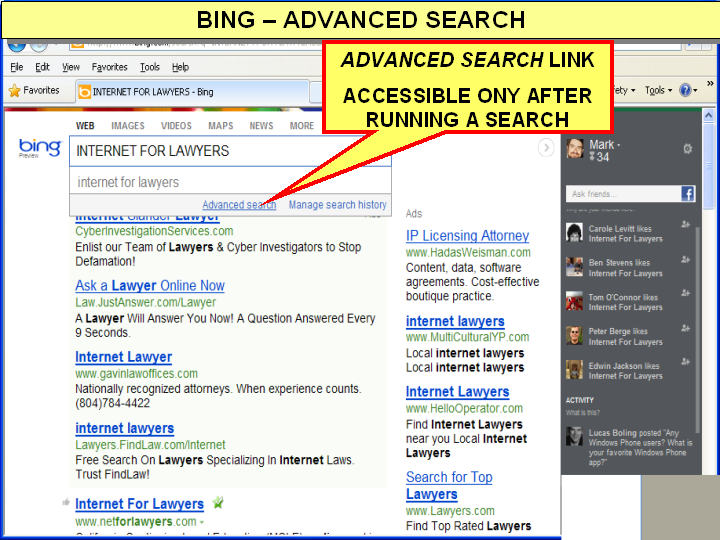Bing has revamped the way it retrieves and displays search results to prominently include results related to your social network connections - primarily Facebook and Twitter.
The new Bing results display interface is broken up into three columns. The widest column, on the left-hand side displays a traditional looking list of relevant "blue link" results. The middle of the three columns, the "Snapshot," is supposed to feature "useful information related to [your] searches and compiled by Bing as a single 'snapshot' – all in one place in a separate column." However, all we have seen in this column our test searches are Ads.
More Social
The far right-hand side of the search results page is where the most visible change to the results reside - in the collapsible "Sidebar." When you're logged in/connected to your Facebook account, the Sidebar includes "recommendations" from your Facebook friends based on your search terms and their "Likes." The Sidebar also includes signals from "experts and enthusiasts" leading to their blogs or Twitter feeds relevant to your search terms.
While conceptually similar to Google's Search Plus Your World, introduced earlier this year, Bing's implementation is different. While Google has chosen to tightly integrate the "social signals" into its main search results list, Bing has (mostly) chosen to segregate the social signals to the Sidebar. However, Bing does include social signals in the left-hand column of search results in the form of a "thumbs up" icon that indicates which of your Facebook friends has Liked a particular site on the results list. (It si unclear if these Likes are figured into where a particular site will rank on the results list. Additionally, where Google is relying heavily on its own Google+ social network for its social signals, Bing is compiling these signals from the more popular Facebook social network.
Less Search
As part of this redesign, Bing has moved the "Advanced Search" features that are available to narrow down your search results after you had conducted an initial search. Now, to access the Advanced search features you have to highlight your keywords in the search box (on the search results page) to bring up the link to the Advanced Search menu. This will also bring up a list of other suggested search terms.

Part of the rationale behind moving these features may be found in a quote from Bing Senior Director Stefan Weitz. "People are using the Web to do things in the real world, and that’s a big change from where things were a decade ago," he said in the press release announcing the changes. "And so the 10 blue links that search has been predicated on for the last decade no longer makes sense. Simply put, that’s not how you get things done." While this may be true for some searches, this is not necessarily true for the types of background and investigative research lawyers, paralegals, and other legal professionals need to conduct via search engines.
| Attachment | Size |
|---|---|
| BING SOCIAL.PNG | 157.3 KB |
| BING ADVANCED.png | 182.96 KB |
| BING_SOCIAL.png | 157.3 KB |
THE LATEST INTERNET RESEARCH TIPS
Read the latest strategies, tips and new resources available for integrating the Internet into your law practice in our newsletter.
-
11/13/2025
-
11/06/2025
-
10/28/2025



